- Home
- Clive Cussler
Inca Gold dp-12 Page 18
Inca Gold dp-12 Read online
Page 18
"I was thinking of the lost treasure of Huascar," said Pitt.
"You've heard of that one?"
"Dr. Kelsey recounted it. She described an immense golden chain that sounded a bit farfetched."
Ortiz nodded. "That part of the legend happens to be true. The great Inca king, Huayna Capac, decreed that a huge gold chain be cast in honor of the birth of his son, Huascar. Many years later, after Huascar succeeded his father as king, he ordered the royal treasure to be smuggled from the Inca capital at Cuzco and hidden to keep it out of the hands of his brother Atahualpa, who later usurped the kingdom after a lengthy civil war. The vast hoard, besides the golden chain, included life-size statues, thrones, sun disks, and every insect and animal known to the Incas, all sculpted in gold and silver and set with precious gems."
"I've never heard of a treasure that grand," said Gunn.
"The Incas had so much gold they couldn't understand why the Spanish were so fanatical for it. The craze became part of the El Dorado fable. The Spanish died by the thousands searching for the treasure. The Germans and the English, who included Sir Walter Raleigh, all scoured the mountains and jungles, but none ever found it."
"As I understand it," said Pitt, "the chain and the other art treasures were eventually transported to a land beyond the Aztecs and buried."
Ortiz nodded. "So the story goes. Whether it was actually taken north by a fleet of ships has never been verified. It was reasonably proven, however, that the hoard was protected by Chachapoyan warriors who formed the royal guard for Inca kings after their confederation was conquered by Huayna Capac in 1480."
"What is the history of the Chachapoyas?" asked Gunn.
"Their name means Cloud People," replied Ortiz. "And their history has yet to be written. Their cities, as you well know from recent experience, are buried in one of the most impenetrable jungles of the world. As of this date, archaeologists have neither the funds nor the means to conduct extensive surveys and excavations on Chachapoyan ruins."
"So they remain an enigma," said Pitt.
"In more ways than one. The Chachapoya people, according to the Incas, were fair-skinned, with blue and green eyes. The women were said to be very beautiful and became highly prized by both the Incas and the Spanish. They were also quite tall. An Italian explorer found a skeleton in a Chachapoyan tomb that was well over two meters."
Pitt was intrigued. "Close to seven feet?"
"Easily," Ortiz answered.
"Any possibility they might have been descendants of early explorers from the Old World, perhaps the Vikings who might have sailed across the Atlantic, up the Amazon, and settled in the Andes?"
"Theories of early transoceanic migration to South America across both the Atlantic and the Pacific have always abounded," answered Ortiz. "The fancy term for pre-Columbian travel to and from other continents is diffusionism. An interesting concept, not well accepted but not entirely ignored either."
"Is there evidence?" asked Giordino.
"Mostly circumstantial. Ancient pottery found in Ecuador that has the same designs as the Ainu culture of northern Japan. The Spanish, as well as Columbus, reported seeing white men sailing large ships off Venezuela. The Portuguese found a tribe in Bolivia whose beards were more magnificent than the Europeans', contrary to the fact that most Indians lacked abundant facial hair. Reports of -livers and fishermen finding Roman or Grecian amphorae in the waters off Brazil come up routinely."
The giant stone heads from the Olmec culture of Mexico show definite features of black Africans," said Pitt, "while any number of carved stone faces throughout the Mesoamerican cultures have Oriental characteristics."
Ortiz nodded in agreement. "The serpent heads that decorate many of the Mayan pyramids and temples are the spitting image of dragon heads carved in Japan and China."
"But is there hands-on proof?" asked Gunn.
"No objects that can be conclusively proven as manufactured in Europe have yet to be found."
"The skeptics have a strong case in the lack of pottery lathes or wheeled vehicles," Gunn added.
"True," agreed Ortiz. "The Mayans did adopt the wheel for children's toys but never for practical use. Not surprising when you consider they had no beasts 'of burden until the Spanish introduced the horse and oxen."
"But you would think they could have found a purpose for the wheel, say for hauling construction materials," Gunn persisted.
"History tells us that the Chinese developed the wheelbarrow six hundred years before it found its way to Europe," Ortiz countered.
Pitt downed the last of his brandy. "It doesn't seem possible an advanced civilization existed in such a remote region without some kind of outside influence."
"The people living in the mountains today, descendants of the Chachapoyas, many of them still fair-skinned with blue and green eyes, speak of a godlike man who appeared among their ancestors from the eastern sea many centuries ago. He taught them building principles, the science of the stars, and the ways of religion."
"He must have forgotten to teach them how to write," quipped Giordino.
"Another nail in the coffin of pre-Columbian contact," said Gunn.
"This holy man had thick white hair and a flowing beard," Ortiz continued. "He was extremely tall, wore a long white robe, and preached goodness and charity toward all. The rest of the story is too close to that of Jesus to be taken literally-- the natives must have introduced events from Christ's life into the ancient story after they were converted to Christianity. He traveled the land, healing the sick, making the blind see again, working all sorts of miracles. He even walked on water. The people raised temples to him and carved his likeness in wood and stone. None of these portraits, I might add, has ever been found. Almost verbatim, the same myth has come down through the ages from the early Mexican cultures in the form of Quetzalcoatl, the ancient god of old Mexico."
"Do you believe any part of the legend?" asked Pitt.
Ortiz shook his head. "Not until I excavate something substantial that I can positively authenticate. We may, however, have some answers quite soon. One of your universities in the United States is currently running DNA tests on Chachapoyan remains removed from tombs. If successful, they will be able to confirm whether the Chachapoyas came from Europe or evolved independently."
"What about Huascar's treasure?" said Pitt, bringing the conversation back on track.
"A discovery that would stun the world," Ortiz answered. "I'd like to think the hoard still exists in some forgotten cave in Mexico." Then he exhaled a cloud of cigar smoke and stared at the evening stars. "The chain would be a fabulous discovery. But for an archaeologist, the great finds would be the huge solid gold sun disk and the royal golden mummies that vanished along with the chain."
"Golden mummies," echoed Gunn. "Did the Incas preserve their dead like the Egyptians?"
"The preservation process was not nearly as complex as that practiced by the Egyptians," explained Ortiz. "But the bodies of the supreme rulers, or Sapa Incas as they were called, were encased in gold and became cult objects in the people's religious practices. The mummies of the dead kings lived in their own palaces, were frequently reclothed with fresh wardrobes, served sumptuous feasts, and maintained harems of the most beautiful women. Chosen as attendants, I might add, not to indulge in necrophilia."
Giordino stared over the shadows of the city. "Sounds like a waste of taxpayers' money."
"A large body of priests supervised the upkeep," Ortiz continued, "acquiring a lucrative interest in keeping the dead kings happy. The mummies were often carried around the country in great splendor, as if they were still heads of state. Needless to say, this absurd love affair with the dead caused a great drain on Inca financial resources, helping immeasurably to topple the empire during the Spanish invasion."
Pitt zipped his leather jacket against the cold and said, "While on board our ship, Dr. Kelsey received a message concerning a stolen suit of gold that was traced to a collector in Chicago."
&n
bsp; Ortiz looked thoughtful and nodded. "Yes, the Golden Body Suit of Tiapollo. It covered the mummy of a great general called Naymlap who was the right-hand advisor to an early Inca king. Before leaving Lima, I heard that American Customs agents had tracked it down, only to lose it again."
"Lose it?" For some reason Pitt didn't feel vastly surprised.
"The director of our National Cultural Ministry was about to board a plane to the United States to lay claim to the mummy and the body suit when he was informed that your Customs agents were too late. Thieves made off with it while they had the owner under surveillance."
"Dr. Kelsey said that images engraved on the suit depicted the voyage of the fleet that carried the treasure to Mexico."
"Only a few of the images were deciphered. Modern scholars never had a chance to study the suit properly before it was stolen from its case in the museum in Seville."
"It's conceivable," suggested Pitt, "that whoever grabbed the suit this time is on the trail of the golden chain."
"A credible conclusion," Ortiz agreed.
"Then the thieves have an inside track," said Giordino.
"Unless someone else discovers the Drake quipu," Pitt said slowly, "and gets there first."
"Ah yes, the infamous jade box," Ortiz sighed skeptically. "A fanciful tale that has refused to die. So you also know about the legendary rope trick giving directions to the golden chain?"
"You sound dubious," said Pitt.
"No hardcore evidence. All reports are too flimsy to take seriously."
"You could write a thick book about the superstitions and legends that were proven to be true."
"I am a scientist and a pragmatist," said Ortiz. "If such a quipu exists, I would have to hold it in my own hands, and even then I wouldn't be fully convinced of its authenticity."
"Would you think me mad if I told you I was going to hunt for it?" asked Pitt.
"No madder than the thousands of men throughout history who have chased over the horizon after a nebulous dream." Ortiz paused, flicked the ash from his cigar, and then stared heavily at Pitt through somber eyes. "Be forewarned. The one who finds it, if it really exists, will be rewarded with success and then doomed to failure."
Pitt stared back. "Why doomed to failure?"
"An amauta, an educated Inca who could understand the text, and a quipu-mayoc, a clerk who recorded on the device, can't help you."
"What are you telling me?"
"Simply put, Mr. Pitt. The last people who could have read and translated the Drake quipu for you have been dead for over four hundred years."
In a remote, barren part of the southwest desert, a few kilometers east of Douglas, Arizona, and only 75 meters (246 feet) from the border between Mexico and the United States, the hacienda La princesa loomed like a Moorish castle at an oasis. It was named by the original owner, Don Antonio Diaz, in honor of his wife, Sophia Magdalena, who died during childbirth and was entombed in an ornate, baroque crypt that stood enclosed within a high-walled garden. Diaz, a peon who became a miner, struck it rich and took an immense amount of silver out of the nearby Huachuca Mountains.
The huge feudal estate rested on lands that were originally granted to Diaz by General, later President of Mexico, Antonio Lopez de Santa Ana, for helping to finance the despot's campaigns to subdue Texas and later launch a war against the United States. This was a disaster that Santa Ana compounded by selling the Mesilla Valley in southern Arizona to the United States, a transaction known as the Gadsden Purchase. The border shift left Diaz's hacienda in a new country a stone's throw from the old.
The hacienda was passed down through the Diaz family until 1978, when the last surviving member, Maria Estala, sold it to a rich financier shortly before she died at ninety-four. The new owner, Joseph Zolar, made no mystery of the fact that he acquired the hacienda as a retreat for entertaining celebrities, high government officials, and wealthy business leaders on a lavish scale. Zolar's hacienda quickly became known as the San Simeon of Arizona. His high-profile guests were flown or bused to the estate and his parties were dutifully reported in all the gossip columns and photographed for the slick magazines around the country.
An antiquarian and fanatical art collector, Zolar had amassed a vast accumulation of art objects and antiques, both good and bad. But every piece was certified by experts and government agents as having been legally sold from the country of origin and imported with the proper papers. He paid his taxes, his business dealings were aboveboard, and he never allowed his guests to bring drugs into his home. No scandal had ever stained Joseph Zolar.
He stood on a roof terrace amid a forest of potted plants and watched as a private jet touched down on the estate runway that stretched across the desert floor. The jet was painted a golden tan with a bright purple stripe running along its fuselage. Yellow letters on the stripe read Zolar International. He watched as a man casually dressed in a flowered sport shirt and khaki shorts left the aircraft and settled in the seat of a waiting golf cart.
The eyes below Zolar's surgically tightened lids glittered like gray crystal. The pinched, constantly flushed face complemented the thin, receding, brushed-back hair that was as dull red as Mexican saltillo tile. He was somewhere in his late fifties, with a face that was fathomless, a face that had rarely been out of an executive office or a boardroom, a face that was tempered by hard decisions and cold from issuing death warrants when he felt they were required. The body was small but hunched over like a vulture about to take wing. Dressed in a black silk jumpsuit, he wore the indifferent look of a Nazi concentration camp officer who considered death about as interesting as rain.
Zolar waited at the top of the stairs as his guest climbed toward the terrace. They greeted each other warmly and embraced. "Good to see you in one piece, Cyrus."
Sarason grinned. "You don't know how close you came to losing a brother."
"Come along, I've held lunch for you." Zolar led Sarason through the maze of potted plants to a lavishly set table beneath a palapa roof of palm fronds. "I've selected an excellent chardonnay and my chef has prepared a delicious braised pork loin."
"Someday I'm going to pirate him away from you," said Sarason.
"Fat chance." Zolar laughed. "I've spoiled him. He enjoys too many perks to jump ship."
"I envy your lifestyle."
"And I yours. You've never lost your spirit of adventure. Always skirting death and capture by police in some desert or jungle when you could conduct business out of a luxurious corporate office and delegate the dirty work to others."
"A nine-to-five existence was never in my blood," said Sarason. "I find wallowing in dirty dealings an exciting challenge. You should join me sometime."
"No, thank you. I prefer the comforts of civilization."
Sarason noticed a table with what looked like four weathered tree limbs about one meter in length lying across its surface. Intrigued, he walked over and studied them more closely. He recognized them as sun-bleached roots of cottonwood trees that had grown naturally into grotesque human-shaped figures, complete with torsos, arms and legs, and rounded heads. Faces were crudely carved in the heads and painted with childlike features. "New acquisitions?" he asked.
"Very rare religious ceremonial idols belonging to an obscure tribe of Indians," answered Zolar.
"How did you come by them?"
"A pair of illegal artifact hunters found them in an ancient stone dwelling they discovered under the overhang of a cliff."
"Are they authentic?"
"Yes, indeed." Zolar took one of the idols and stood it on its feet. "To the Montolos, who live in the Sonoran Desert near the Colorado River, the idols represent the gods of the sun, moon, earth, and life-giving water. They were carved centuries ago and used in special ceremonies to mark the transition of boys and girls into young adulthood. The rite is full of mysticism and staged every two years. These idols are the very core of the Montolo religion."
"What do you estimate they're worth?"
"Possibly two
hundred thousand dollars to the right collector."
"That much?"
Zolar nodded. "Providing the buyer doesn't know about the curse that stalks those who possess them."
Sarason laughed. "There is always a curse."
Zolar shrugged. "Who can say? I do have it on good authority that the two thieves have suffered a run of bad luck. One was killed in an auto accident and the other has contracted some sort of incurable disease."
"And you believe that hokum?"
"I only believe in the finer things of life," said Zolar, taking his brother by the arm. "Come along. Lunch awaits."
After the wine was poured by a serving lady, they clinked glasses and Zolar nodded at Sarason. "So, brother, tell me about Peru."
It always amused Sarason that their father had insisted on his sons and daughters adopting and legalizing different surnames. As the oldest, only Zolar bore the family name. The far-flung international trade empire that the senior Zolar had amassed before he died was divided equally between his five sons and two daughters. Each had become a corporate executive officer of either an art and antique gallery, an auction house, or an import/export firm. The family's seemingly separate operations were in reality one entity, a jointly owned conglomerate secretly known as the Solpemachaco. Unknown and unregistered with any international government financial agencies or stock markets, its managing director was Joseph Zolar in his role as family elder.
"Nothing short of a miracle that I was able to save most of the artifacts and successfully smuggle them out of the country after the blunders committed by our ignorant rabble. Not to mention the intrusion by members of our own government."
"U.S. Customs or drug agents?" asked Zolar.
"Neither. Two engineers from the National Underwater and Marine Agency. They showed up out of nowhere when Juan Chaco sent out a distress call after Dr. Kelsey and her photographer became trapped in the sacred well."

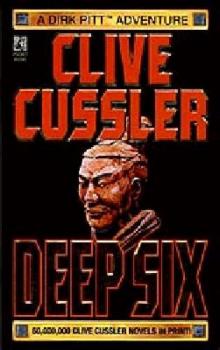 Deep Six
Deep Six Odessa Sea
Odessa Sea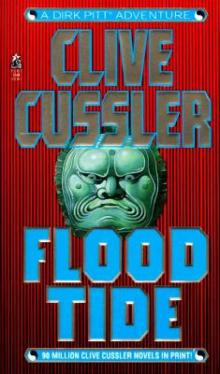 Flood Tide
Flood Tide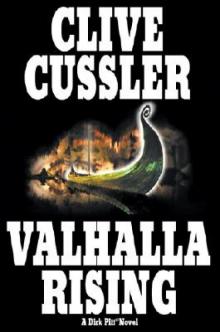 Valhalla Rising
Valhalla Rising Thriller 2
Thriller 2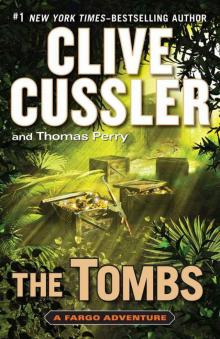 The Tombs
The Tombs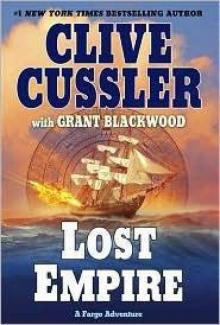 Lost Empire
Lost Empire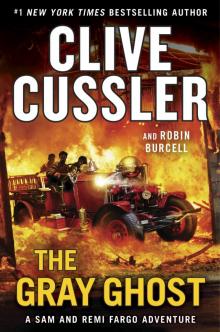 The Gray Ghost
The Gray Ghost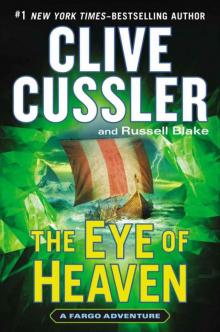 The Eye of Heaven
The Eye of Heaven Polar Shift
Polar Shift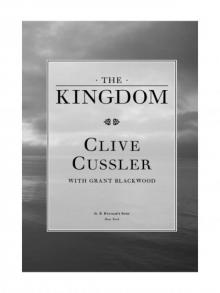 The Kingdom
The Kingdom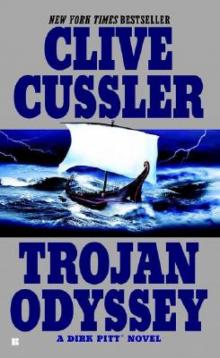 Trojan Odyssey
Trojan Odyssey Shadow Tyrants
Shadow Tyrants Nighthawk
Nighthawk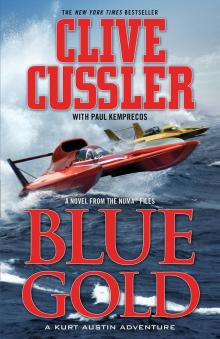 Blue Gold
Blue Gold Serpent
Serpent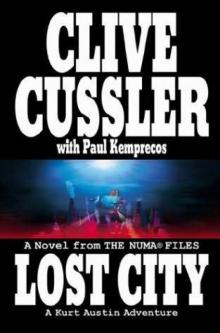 Lost City
Lost City The Gangster
The Gangster White Death
White Death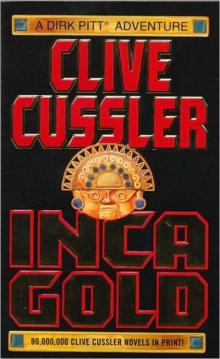 Inca Gold
Inca Gold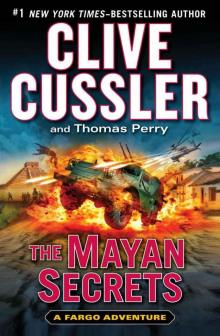 The Mayan Secrets
The Mayan Secrets The Pharaoh's Secret
The Pharaoh's Secret The Emperor's Revenge
The Emperor's Revenge Corsair
Corsair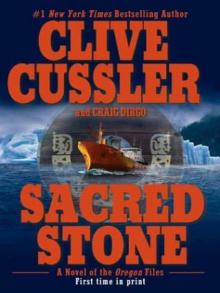 Sacred Stone
Sacred Stone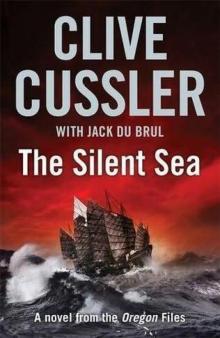 The Silent Sea
The Silent Sea The Rising Sea
The Rising Sea Black Wind
Black Wind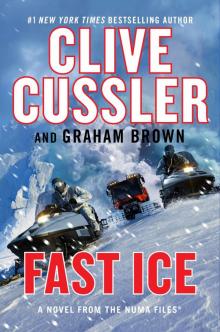 Fast Ice
Fast Ice Ghost Ship
Ghost Ship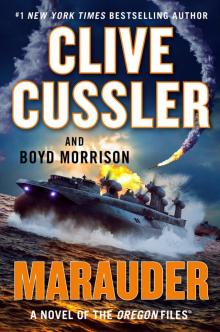 Marauder
Marauder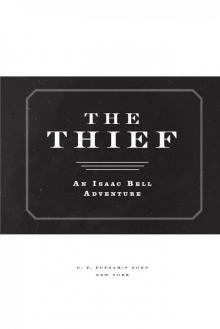 The Thief
The Thief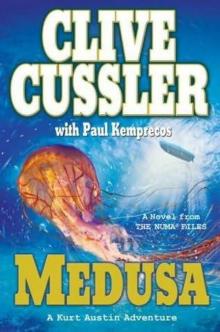 Medusa
Medusa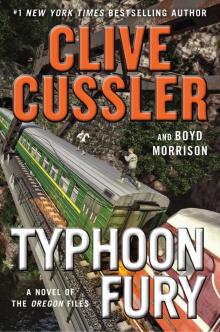 Typhoon Fury
Typhoon Fury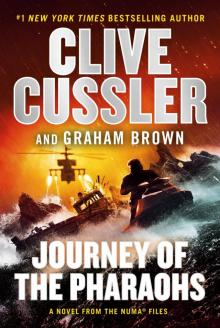 Journey of the Pharaohs
Journey of the Pharaohs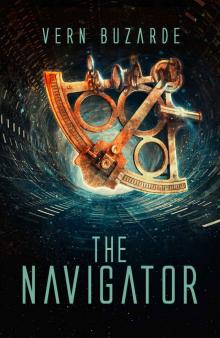 The Navigator
The Navigator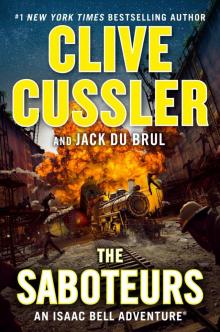 The Saboteurs
The Saboteurs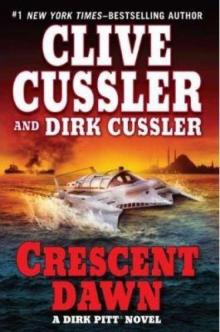 Crescent Dawn
Crescent Dawn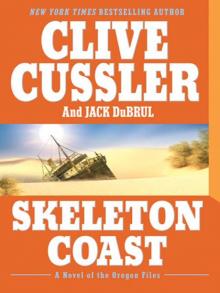 Skeleton Coast
Skeleton Coast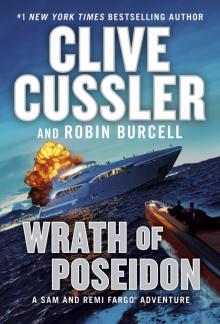 Wrath of Poseidon
Wrath of Poseidon The Mediterranean Caper
The Mediterranean Caper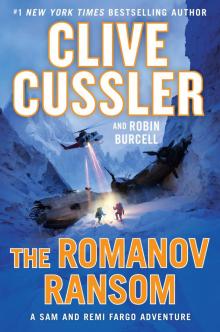 The Romanov Ransom
The Romanov Ransom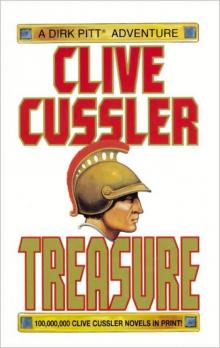 Treasure
Treasure The Race
The Race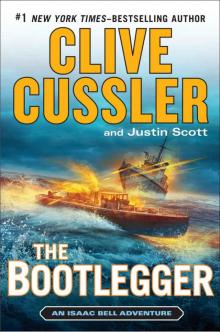 The Bootlegger
The Bootlegger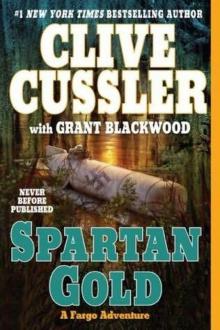 Spartan Gold
Spartan Gold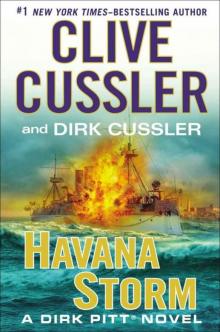 Havana Storm
Havana Storm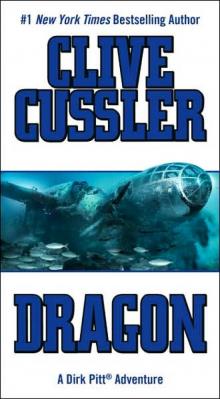 Dragon
Dragon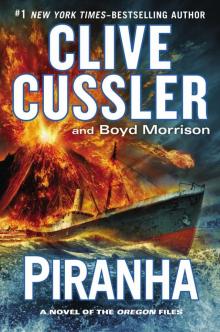 Piranha
Piranha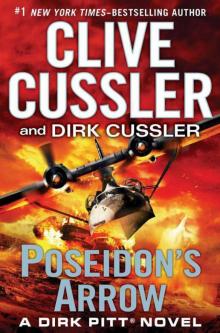 Poseidon's Arrow
Poseidon's Arrow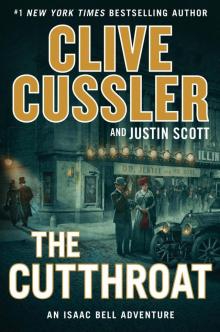 The Cutthroat
The Cutthroat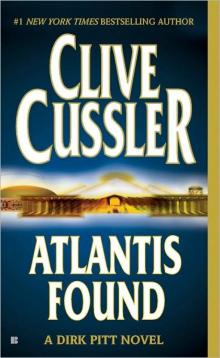 Atlantis Found
Atlantis Found The Jungle
The Jungle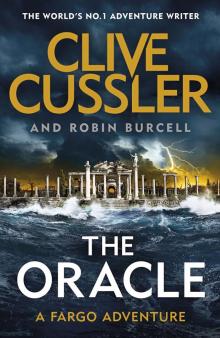 The Oracle
The Oracle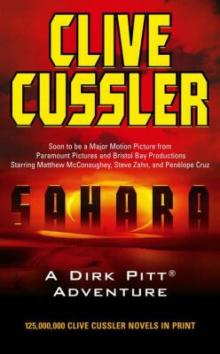 Treasure / Dragon / Sahara: Clive Cussler Gift Set
Treasure / Dragon / Sahara: Clive Cussler Gift Set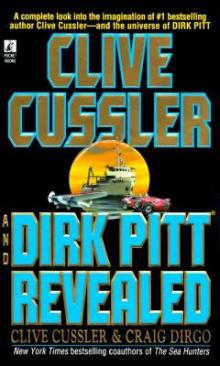 Clive Cussler and Dirk Pitt Revealed
Clive Cussler and Dirk Pitt Revealed The Sea Hunters
The Sea Hunters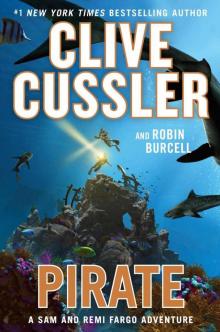 Pirate
Pirate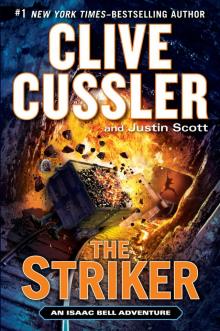 The Striker
The Striker Plague Ship
Plague Ship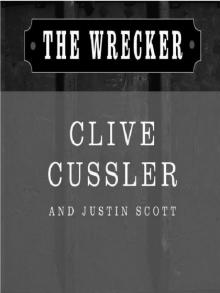 The Wrecker
The Wrecker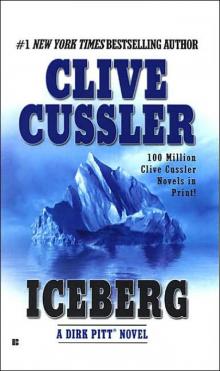 Iceberg
Iceberg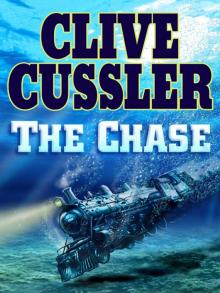 The Chase
The Chase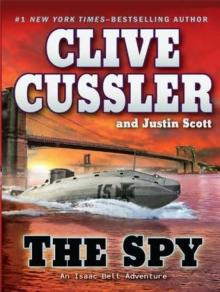 The Spy
The Spy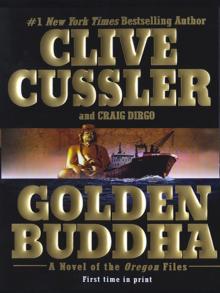 Golden Buddha
Golden Buddha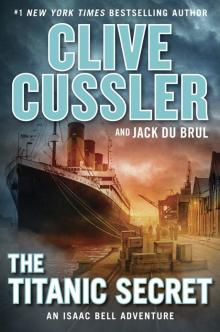 The Titanic Secret
The Titanic Secret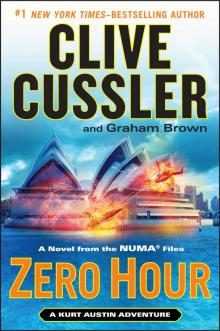 Zero Hour
Zero Hour Fire Ice
Fire Ice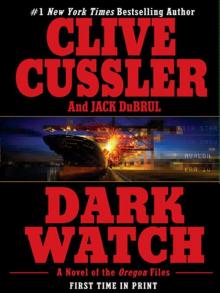 Dark Watch
Dark Watch The Storm
The Storm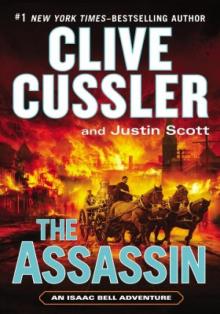 The Assassin
The Assassin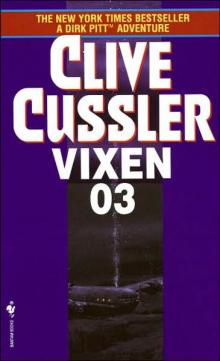 Vixen 03
Vixen 03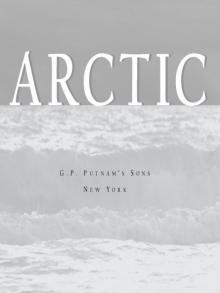 Arctic Drift
Arctic Drift Night Probe!
Night Probe! Cyclops
Cyclops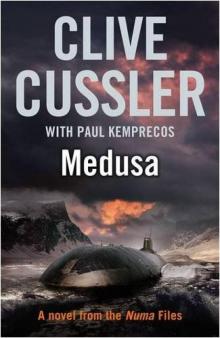 Medusa nf-8
Medusa nf-8 Shock Wave dp-13
Shock Wave dp-13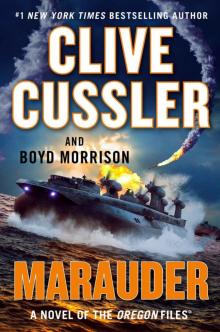 Marauder (The Oregon Files)
Marauder (The Oregon Files)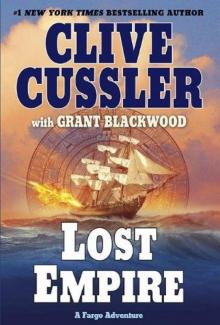 Lost Empire fa-2
Lost Empire fa-2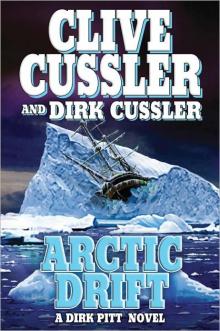 Arctic Drift dp-20
Arctic Drift dp-20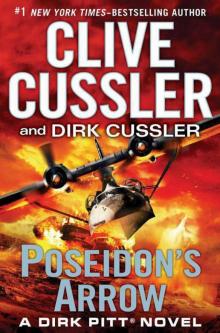 Dirk Pitt 22 - Poseidon's Arrow
Dirk Pitt 22 - Poseidon's Arrow Treasure of Khan dp-19
Treasure of Khan dp-19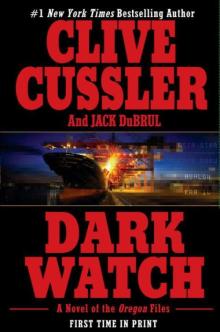 Dark Watch of-3
Dark Watch of-3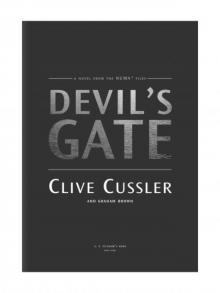 Devil's Gate
Devil's Gate The Sea Hunters II: More True Adventures with Famous Shipwrecks
The Sea Hunters II: More True Adventures with Famous Shipwrecks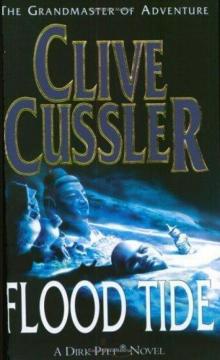 Flood Tide dp-14
Flood Tide dp-14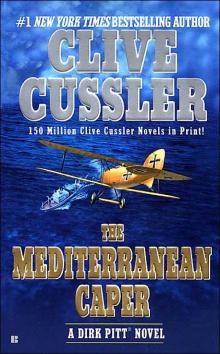 The Mediterranean Caper dp-2
The Mediterranean Caper dp-2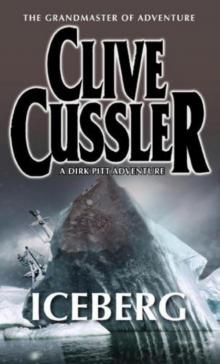 Iceberg dp-3
Iceberg dp-3 Sahara dpa-11
Sahara dpa-11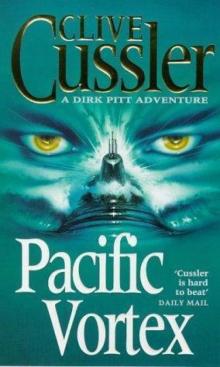 Pacific Vortex! dp-1
Pacific Vortex! dp-1 Deep Six dp-7
Deep Six dp-7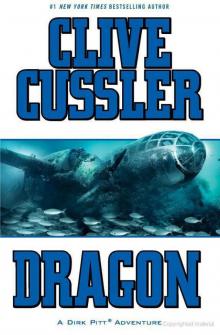 Dragon dp-10
Dragon dp-10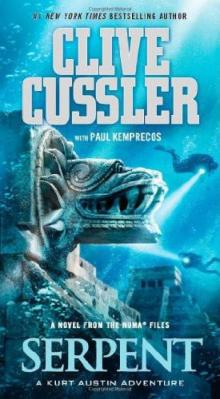 Serpent nf-1
Serpent nf-1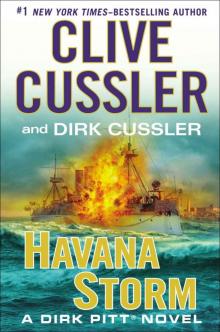 Havana Storm (Dirk Pitt Adventure)
Havana Storm (Dirk Pitt Adventure)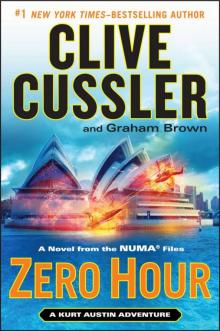 Zero Hour nf-11
Zero Hour nf-11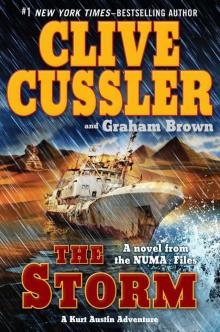 The Storm nf-10
The Storm nf-10 The Thief ib-5
The Thief ib-5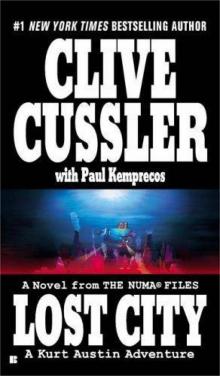 Lost City nf-5
Lost City nf-5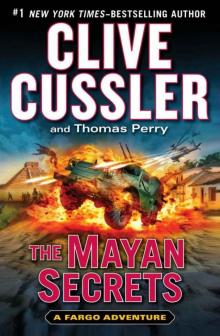 The Mayan Secrets fa-5
The Mayan Secrets fa-5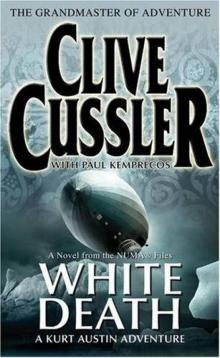 White Death nf-4
White Death nf-4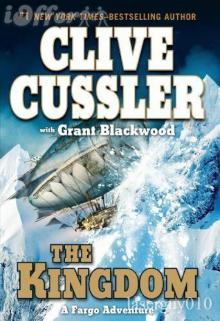 The Kingdom fa-3
The Kingdom fa-3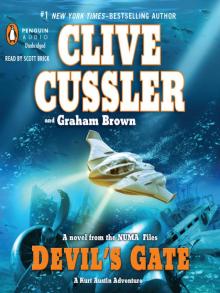 Devil's Gate nf-9
Devil's Gate nf-9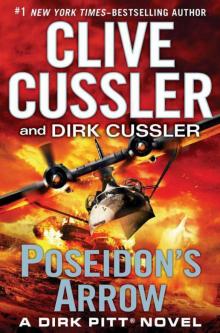 Poseidon's Arrow dp-22
Poseidon's Arrow dp-22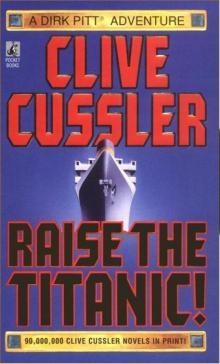 Raise the Titanic dp-4
Raise the Titanic dp-4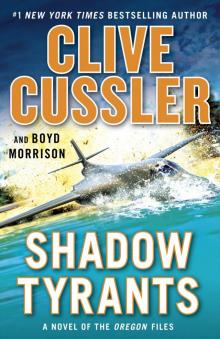 Shadow Tyrants--Clive Cussler
Shadow Tyrants--Clive Cussler Sacred Stone of-2
Sacred Stone of-2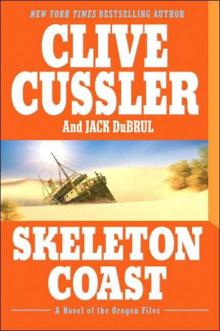 Skeleton Coast tof-4
Skeleton Coast tof-4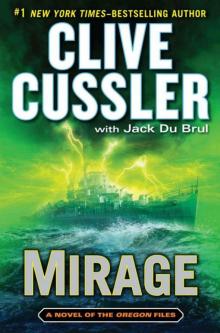 Mirage tof-9
Mirage tof-9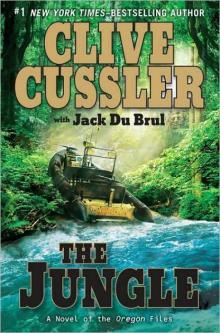 The Jungle of-8
The Jungle of-8 The Emperor's Revenge (The Oregon Files)
The Emperor's Revenge (The Oregon Files)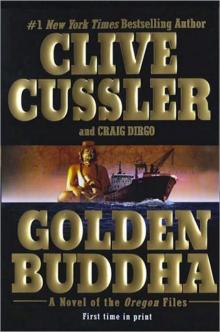 Golden Buddha of-1
Golden Buddha of-1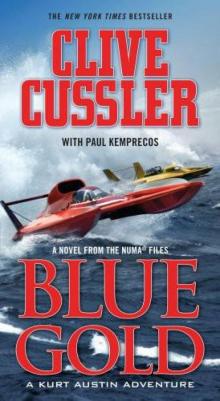 Blue & Gold
Blue & Gold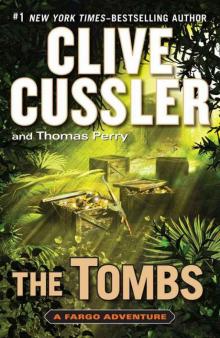 The Tombs fa-4
The Tombs fa-4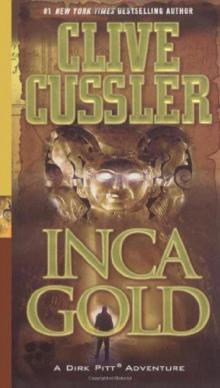 Inca Gold dp-12
Inca Gold dp-12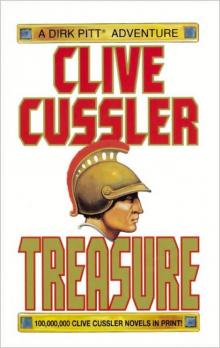 Treasure dp-9
Treasure dp-9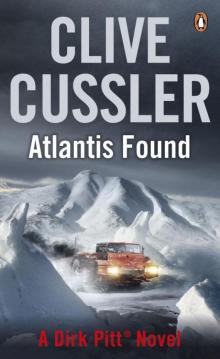 Atlantis Found dp-15
Atlantis Found dp-15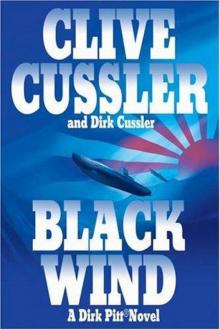 Black Wind dp-18
Black Wind dp-18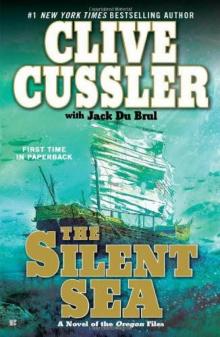 the Silent Sea (2010) tof-7
the Silent Sea (2010) tof-7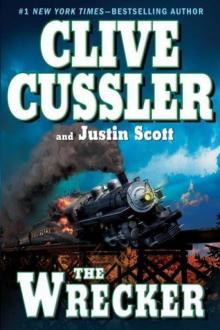 The Wrecker ib-2
The Wrecker ib-2 Fire Ice nf-3
Fire Ice nf-3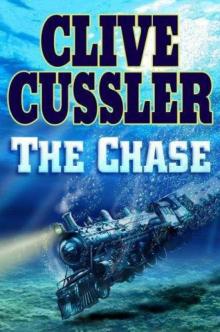 The Chase ib-1
The Chase ib-1 Sahara
Sahara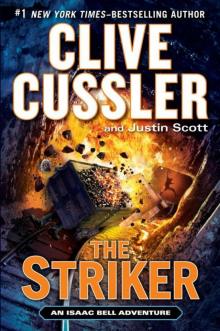 The Striker ib-6
The Striker ib-6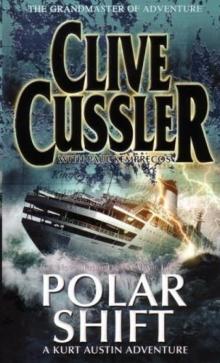 Polar Shift nf-6
Polar Shift nf-6 The Race ib-4
The Race ib-4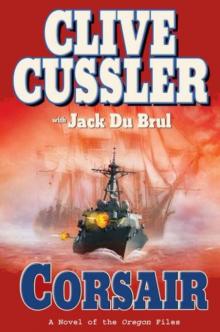 Corsair of-6
Corsair of-6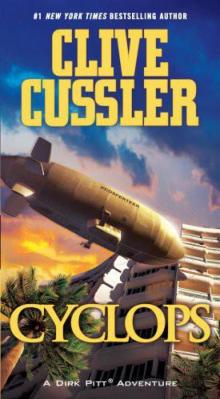 Cyclops dp-8
Cyclops dp-8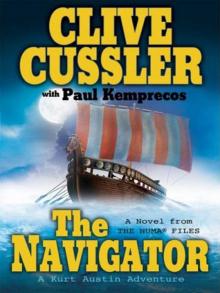 The Navigator nf-7
The Navigator nf-7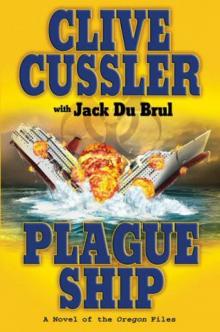 Plague Ship tof-5
Plague Ship tof-5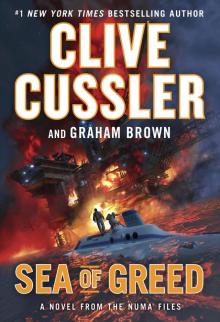 Sea of Greed
Sea of Greed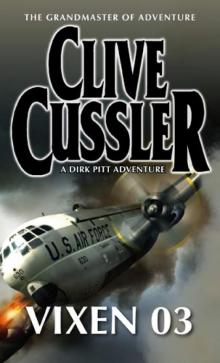 Vixen 03 dp-5
Vixen 03 dp-5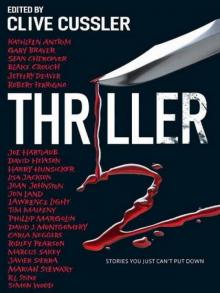 Thriller 2: Stories You Just Can't Put Down
Thriller 2: Stories You Just Can't Put Down